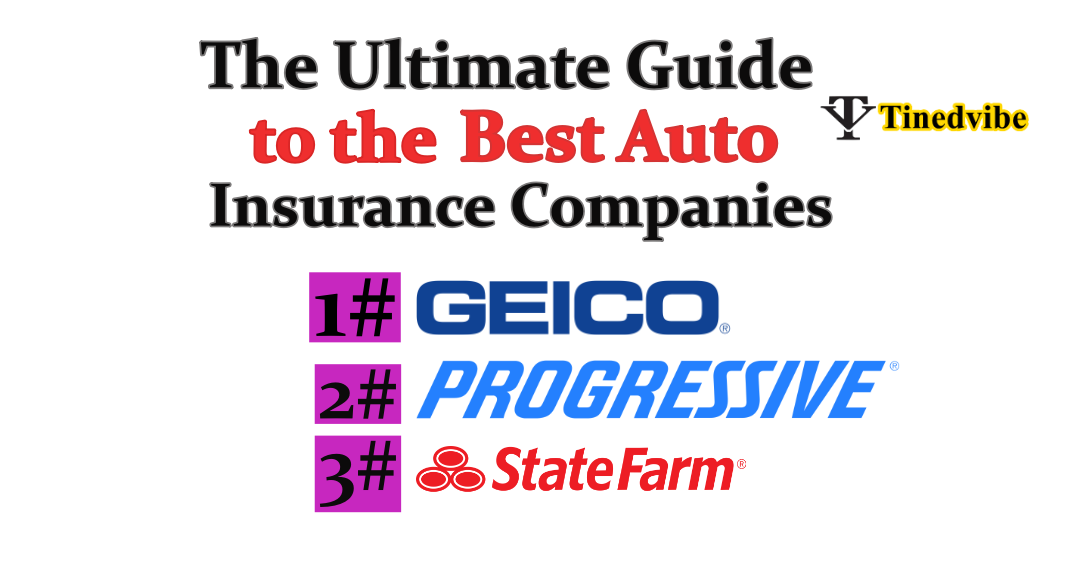In the United States, getting a driver’s license is a rite of passage for many teenagers. However, with this newfound freedom comes a significant responsibility—auto insurance. For young drivers, auto insurance can be quite expensive due to their lack of driving experience. Insurance companies typically consider young drivers to be high-risk due to their age and the statistics that show they are more likely to be involved in accidents. In this comprehensive guide, we will delve into everything you need to know about auto insurance for young drivers.
Factors That Affect Auto Insurance Rates for Young Drivers
Auto insurance rates for young drivers are determined by several factors, including:
- Age
Younger drivers, especially teenagers, typically pay more for auto insurance than older, more experienced drivers. This is because statistics show that teenagers are more likely to be involved in accidents. - Driving Experience
Another critical factor that affects the cost of auto insurance for young drivers is their driving experience. Drivers who have just received their license will pay higher premiums than those with more driving experience. - Type of Vehicle
The type of vehicle a young driver insures also affects the insurance premium. Sports cars and high-performance vehicles usually come with higher insurance rates due to the increased risk associated with these types of vehicles. - Location
Where a young driver lives can also impact their insurance rates. Urban areas with more traffic congestion and higher crime rates typically have higher insurance premiums.
Types of Auto Insurance Coverage
- Age:
Younger drivers, especially teenagers, typically pay more for auto insurance than older, more experienced drivers. Statistics show that teenagers are more likely to be involved in accidents. - Driving Experience:
The driving experience of young drivers significantly affects the cost of auto insurance. Drivers who have just received their license will pay higher premiums than those with more driving experience. - Type of Vehicle:
The type of vehicle a young driver insures also affects the insurance premium. Sports cars and high-performance vehicles usually come with higher insurance rates due to the increased risk associated with these types of vehicles. - Location:
Where a young driver lives can impact their insurance rates. Urban areas with more traffic congestion and higher crime rates typically have higher insurance premiums.
Tips for Lowering Auto Insurance Rates for Young Drivers
- Liability Coverage
Liability coverage is the most basic type of auto insurance and is required in most states. It covers the cost of damages to other people’s property and medical expenses if you’re at fault in an accident. - Collision Coverage
Collision coverage pays for the repair or replacement of your vehicle if it’s damaged in an accident, regardless of who is at fault. - Comprehensive Coverage
Comprehensive coverage protects your vehicle from non-collision incidents, such as theft, vandalism, or damage from natural disasters. - Personal Injury Protection (PIP)
PIP coverage pays for medical expenses for you and your passengers, regardless of who is at fault in an accident. - Uninsured/Underinsured Motorist Coverage
This coverage protects you if you’re involved in an accident with a driver who doesn’t have insurance or enough insurance to cover your damages.
Tips for Lowering Auto Insurance Rates for Young Drivers
Discover the best ways to lower auto insurance rates for young drivers:
- Maintain Good Grades
Many insurance companies offer discounts to young drivers who maintain a high GPA in school. Encourage your child to excel in their studies to qualify for this discount. - Take a Defensive Driving Course
Completing a defensive driving course can not only make young drivers safer on the road but also qualify them for an insurance discount. - Choose a Safe Vehicle
Opting for a safe and reliable vehicle with a high safety rating can help reduce insurance premiums for young drivers. - Bundle Policies
Consider bundling your auto insurance policy with other insurance policies, such as homeowner’s insurance, to receive a discount. - Drive Safely
Maintaining a clean driving record is one of the most effective ways to keep insurance rates low. Avoid accidents and traffic violations to prevent insurance premiums from increasing. - Shop Around
Don’t settle for the first insurance quote you receive. Shop around and compare quotes from multiple insurance companies to find the best rate.
Best Steps on How to Pay for Best auto insurance for young drivers
Paying for auto insurance as a young driver can be challenging, but with the right approach, you can find an affordable policy that meets your needs. Here are the best steps on how to pay for auto insurance for young drivers:
1. Research and Compare Insurance Quotes
The first step in paying for auto insurance as a young driver is to research and compare insurance quotes from multiple providers. Take the time to gather quotes from different insurance companies to find the best rate. Websites and apps make this process easier by allowing you to compare quotes from various insurers in one place.
2. Understand Your Coverage Needs
Before purchasing auto insurance, it’s essential to understand your coverage needs. Consider factors such as the type of vehicle you drive, your driving habits, and your budget. Determine whether you need basic liability coverage or if you would benefit from additional coverage options like collision and comprehensive.
3. Take Advantage of Discounts
Many insurance companies offer discounts to young drivers to help lower their premiums. Some common discounts include:
- Good Student Discount: Maintain a high GPA in school to qualify for this discount.
- Defensive Driving Course Discount: Complete a defensive driving course to become eligible for an insurance discount.
- Multi-Policy Discount: Bundle your auto insurance policy with other insurance policies, such as homeowner’s insurance, to receive a discount.
- Safety Equipment Discount: Install safety features in your vehicle, such as anti-theft devices, to qualify for lower insurance premiums.
- Low Mileage Discount: If you don’t drive frequently, you may be eligible for a low mileage discount.
4. Choose a Higher Deductible
Opting for a higher deductible can help lower your auto insurance premiums. A deductible is the amount you agree to pay out of pocket before your insurance coverage kicks in. While choosing a higher deductible can reduce your monthly premium, it’s important to make sure you can afford the out-of-pocket expense in the event of an accident.
5. Drive Safely
Maintaining a clean driving record is one of the most effective ways to keep insurance rates low. Avoid accidents and traffic violations to prevent insurance premiums from increasing. Safe driving habits not only keep you safe on the road but also help you save money on insurance premiums over time.
6. Consider Pay-Per-Mile Insurance
For young drivers who don’t drive frequently, pay-per-mile insurance can be a cost-effective option. With this type of insurance, you pay a base rate plus a per-mile rate, making it an ideal choice for drivers who don’t use their vehicle often.
7. Shop Around Regularly
Don’t settle for the first insurance quote you receive. Shop around and compare quotes from multiple insurance companies regularly. As you gain more driving experience and your circumstances change, you may be eligible for additional discounts or lower rates.
8. Utilize Parental Policies
If you’re a young driver living with your parents, consider being added to their insurance policy. Adding a young driver to an existing family policy can be more cost-effective than purchasing a separate policy.
9. Pay Annually or Semi-Annually
Some insurance companies offer discounts if you pay your premium annually or semi-annually instead of monthly. While paying upfront may be a more significant financial commitment initially, it can lead to long-term savings on your auto insurance.
10. Keep Your Credit in Good Standing
Maintaining good credit can also help reduce auto insurance premiums. Insurance companies often consider credit history when determining rates. Pay your bills on time, keep credit card balances low, and monitor your credit report regularly to ensure accuracy. Read: Zoromia Life Insurance Quotes: Providing Peace of Mind for You
By following these steps, young drivers can find affordable auto insurance coverage that provides the protection they need without breaking the bank.
Conclusion
Navigating the world of auto insurance can be daunting, especially for young drivers. By understanding the factors that influence insurance rates and implementing the tips provided in this guide, young drivers can find affordable coverage that meets their needs. Remember, auto insurance is not just a legal requirement; it is a crucial investment in protecting yourself and your vehicle on the road.
FAQs About Auto Insurance for Young Drivers
Here are the frequently asked questions about auto insurance for young drivers:
1. What factors affect auto insurance rates for young drivers?
Several factors influence auto insurance rates for young drivers, including:
-
Age:
Younger drivers, especially teenagers, typically pay more for auto insurance than older, more experienced drivers. Statistics show that teenagers are more likely to be involved in accidents.
-
Driving Experience:
The driving experience of young drivers significantly affects the cost of auto insurance. Drivers who have just received their license will pay higher premiums than those with more driving experience.
- Type of Vehicle:
The type of vehicle a young driver insures also affects the insurance premium. Sports cars and high-performance vehicles usually come with higher insurance rates due to the increased risk associated with these types of vehicles. - Location:
Where a young driver lives can impact their insurance rates. Urban areas with more traffic congestion and higher crime rates typically have higher insurance premiums.
2. What are the types of auto insurance coverage available for young drivers?
Types of Auto Insurance Coverage:
Liability Coverage: Liability coverage is the most basic type of auto insurance and is required in most states. It covers the cost of damages to other people’s property and medical expenses if you’re at fault in an accident.
Collision Coverage: Collision coverage pays for the repair or replacement of your vehicle if it’s damaged in an accident, regardless of who is at fault.
Comprehensive Coverage: Comprehensive coverage protects your vehicle from non-collision incidents, such as theft, vandalism, or damage from natural disasters.
Personal Injury Protection (PIP): PIP coverage pays for medical expenses for you and your passengers, regardless of who is at fault in an accident.
Uninsured/Underinsured Motorist Coverage: This coverage protects you if you’re involved in an accident with a driver who doesn’t have insurance or enough insurance to cover your damages.
3. How can young drivers lower their auto insurance rates?
Tips for Lowering Auto Insurance Rates for Young Drivers:
Maintain Good Grades: Many insurance companies offer discounts to young drivers who maintain a high GPA in school. Encourage your child to excel in their studies to qualify for this discount.
Take a Defensive Driving Course: Completing a defensive driving course can not only make young drivers safer on the road but also qualify them for an insurance discount.
Choose a Safe Vehicle: Opting for a safe and reliable vehicle with a high safety rating can help reduce insurance premiums for young drivers.
Bundle Policies: Consider bundling your auto insurance policy with other insurance policies, such as homeowner’s insurance, to receive a discount.
Drive Safely: Maintaining a clean driving record is one of the most effective ways to keep insurance rates low. Avoid accidents and traffic violations to prevent insurance premiums from increasing.
Shop Around: Don’t settle for the first insurance quote you receive. Shop around and compare quotes from multiple insurance companies to find the best rate.
4. Do insurance companies offer discounts for young drivers?
Yes, insurance companies often offer discounts for young drivers. Some common discounts include:
- Good Student Discount: Many insurance companies offer discounts to young drivers who maintain a high GPA in school.
- Defensive Driving Course Discount: Completing a defensive driving course can qualify young drivers for an insurance discount.
- Multi-Policy Discount: Bundling your auto insurance policy with other insurance policies, such as homeowner’s insurance, can often lead to a discount.
- Safety Equipment Discount: Installing safety features in the vehicle, such as anti-theft devices, can result in lower insurance premiums.
- Low Mileage Discount: Young drivers who don’t drive frequently may be eligible for a low mileage discount.
5. Is it possible for young drivers to get auto insurance without a driving history?
Yes, young drivers can get auto insurance without a driving history. However, insurance premiums for these policies are generally higher.
6. How can young drivers choose the best auto insurance policy?
When choosing the best auto insurance policy, young drivers should consider the following:
- Coverage Needs: Determine the level of coverage required based on personal circumstances and preferences.
- Budget: Compare quotes from different insurance providers and choose the policy that offers the best coverage within the budget.
- Discounts: Look for insurance companies that offer discounts to young drivers, such as good student discounts or defensive driving course discounts.
- Customer Service: Consider the customer service reputation of the insurance provider and read reviews to ensure a smooth claims process.
- Policy Terms: Carefully read and understand the terms and conditions of the policy before purchasing.
By understanding these frequently asked questions about auto insurance for young drivers, individuals can make informed decisions and find the best coverage to suit their needs.












Leave a Reply